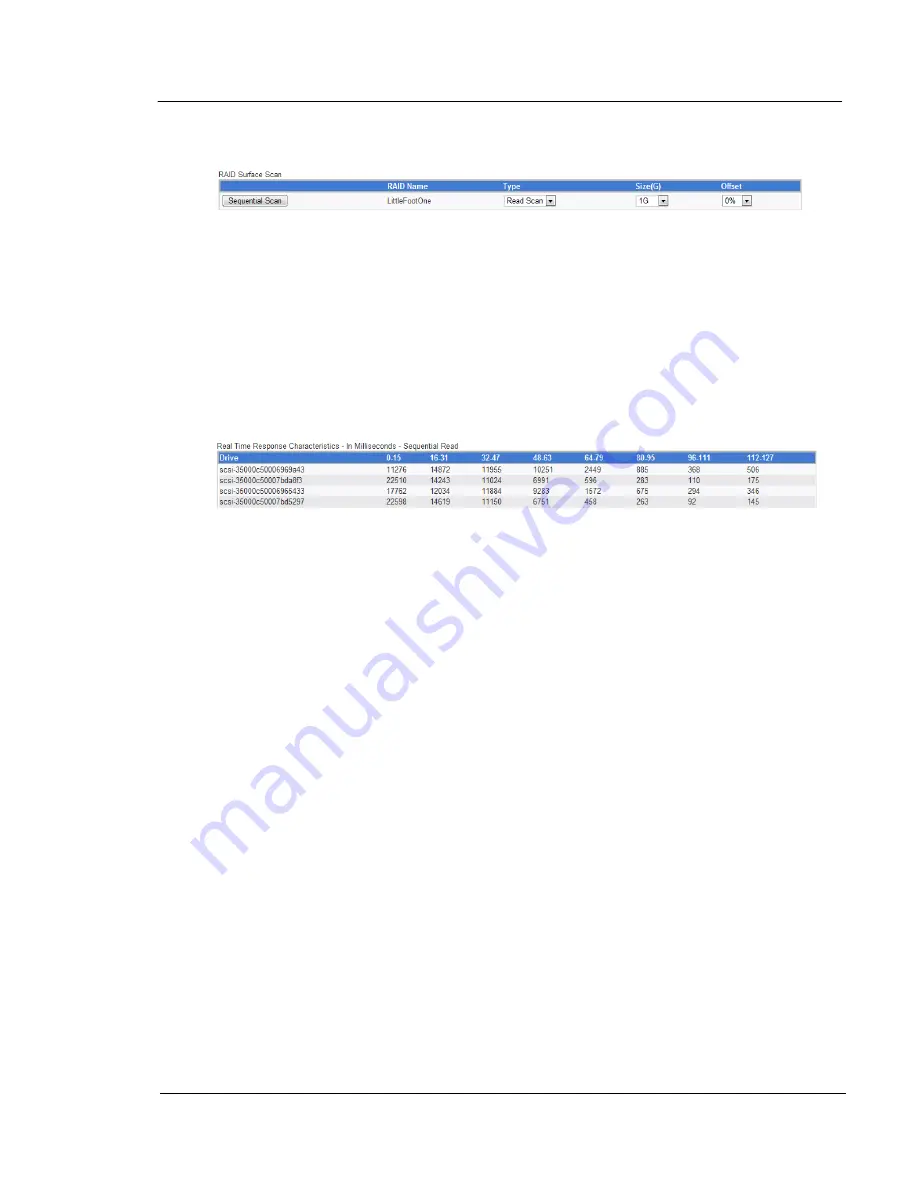
G A L A X Y ® A U R O U R A L S C O N F I G U R A T I O N A N D S Y S T E M I N T E G R A T I O N G U I D E
52
Section 3 Management
CAUTION:
The RAID Surface Scan is a very destructive tool.
CAUTION:
Do not click on the Sequential Scan button yet without reading the
following information .
The Raid Name [LittleFootOne] indicates which RAID is going to be tested - the drives listed in
the tables. ‘Type’ allow you to select the test type - a Read or a Write scan.
CAUTION :
A write scan will wipe out any data on the RAID being tested.
‘Size’ selects the amount of the RAID that will be tested - in steps of 1GB, 10GB, 100GB, or
the entire RAID. Offset will let you specify a starting percent. For example, specifying 10% will
mean that you want to run the test at 10% into the diameter from the outside of the drives.
In this case, the numbers are low because this is a very slow array – the drives are connected
to a PCI/X SAS card. In this test, using the first drive as an example, 11276 sectors fell into
the 0-15ms transfer time range, 14872 fell into the 16-31ms range, 11955 fell into the 32-47ms
range, and so forth.
Now as the offset changes, or if the drives are tested for larger ranges, the drives will slow
down, as the heads near the inside diameter - the slowest parts of the disks. The numbers will
appear to "creep right" - i.e. the left columns will start to decrease and the average will move
further to the right. If you start to see a large pile of numbers in the 112-127 column, there may
be a problem. In fact, if you ran a read scan across the entire RAID, and one disk had
numbers only in the 112-127 column - that would be a really serious problem - go to Slots, and
check the SMART for that drive to see if it is sensing anything wrong with itself - it could be
near failure.
















































